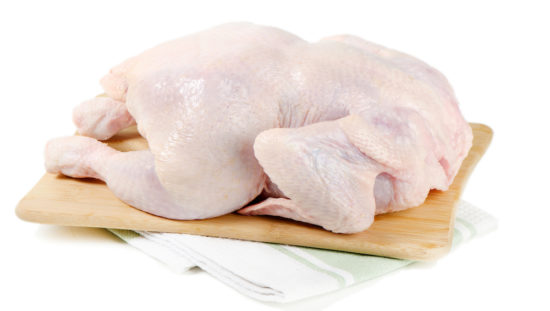Public health officials in Sweden have noted an increase in the number of people falling ill with Campylobacter infections this month.
The rise coincides with an increase in Campylobacter in broiler flocks since the end of July, according to Folkhalsomyndigheten (Public Health Agency of Sweden).
This agency, regional infection control units, National Veterinary Institute (SVA), Livsmedelsverket (National Food Agency), Swedish Board of Agriculture and Swedish Work Environment Authority are investigating causes of the increase and trying to reduce the number of cases.
During the four weeks before the increase, the number of reported cases with domestic infections or where information about country of infection was missing were 88 cases in week 28 in early July; 77 in week 29; 88 in week 30 and 94 in week 31. In week 32 at the start of August infections increased to 149 and they reached 161 in week 33.
Investigating sudden rise in infections
The rise has affected different parts of the country but one county, Sörmland, found 12 cases in July and already there have been 19 in August.
Rikard Dryselius, a microbiologist at Folkhalsomyndigheten, said the general increase is seen in most counties across Sweden, especially in those with a large enough population base.
“We do not know yet whether it is an outbreak or not. The information we have is a sudden increase in the number of human cases that, according to the Swedish National Veterinary Institute, follows a sudden increase among large broiler flocks. Typing is under way and comparisons will be performed,” he told Food Safety Website.
The SVA reports information weekly on the proportion of Campylobacter positive flocks. This shows an increase for week 29, 30 and 31.
Campylobacter infection is more common in the summer, but the increase comes after a period when the incidence has been unusually low. The prevalence of Campylobacter in broiler flocks has been very low during the first half of the year.
“The COVID-19 pandemic is one plausible explanation for the low numbers as similar patterns have also been observed for other diseases, which we intend to investigate further. An additional explanation could also be the low level of Campylobacter positive broiler flocks, as you can see in the statistics of SVA,” said Dryselius.
Tackling Campylobacter problem
For the past three years, Folkhalsomyndigheten and Livsmedelsverket have compared Campylobacter from fresh chicken bought in stores during the summer with Campylobacter from human cases during the corresponding period.
This work found about a third of cases could be linked to chicken meat and the majority to Swedish conventionally bred chicken.
Evidence so far suggests the increase in infections and higher occurrence in broiler flocks is also on this occasion connected, according to Folkhalsomyndigheten.
Folkhalsomyndigheten and the National Veterinary Institute will analyze Campylobacter samples from patients and broiler flocks as part of the investigation.
A total of 8,132 cases of campylobacteriosis were reported in 2018 compared to 10,608 in 2017. Most are considered sporadic but in the past few years, several large outbreaks linked to domestically produced chicken have occurred. In 2016 and 2017, the country had a large outbreak caused by Swedish chicken with an estimated 5,000 more cases reported between August 2016 and May 2017 than normal.
People with infection usually have diarrhea which is often bloody, fever, and stomach cramps. Nausea and vomiting may occur. Symptoms usually start two to five days after the person ingests Campylobacter and last about one week.
(To sign up for a free subscription to Food Safety Website, click here.)

